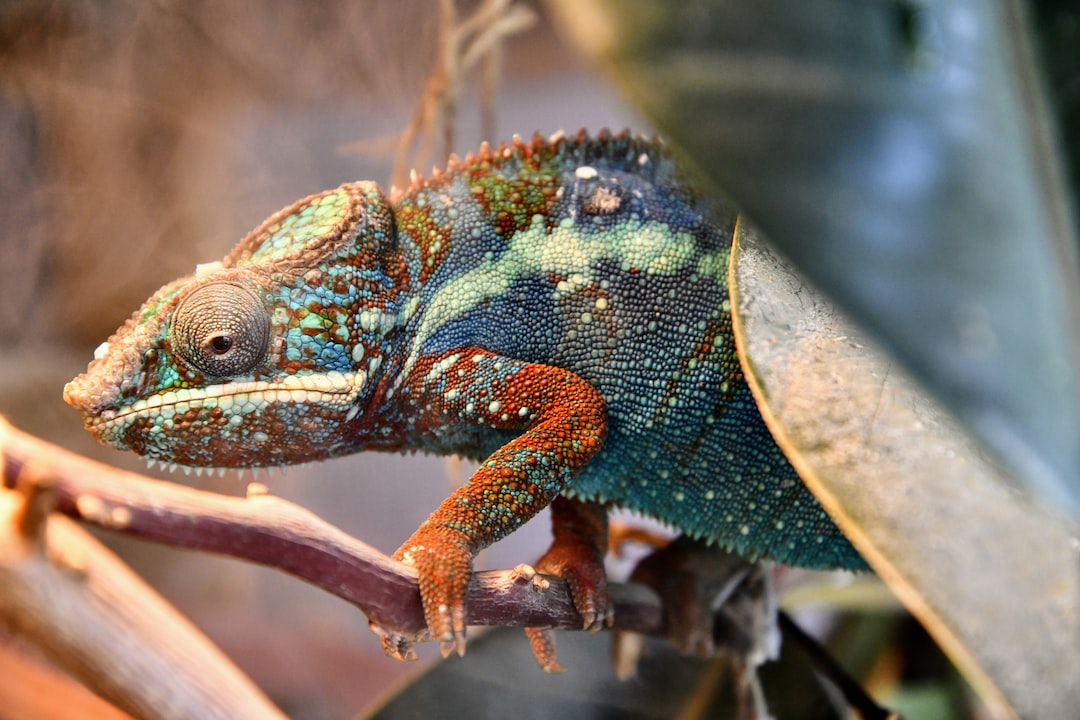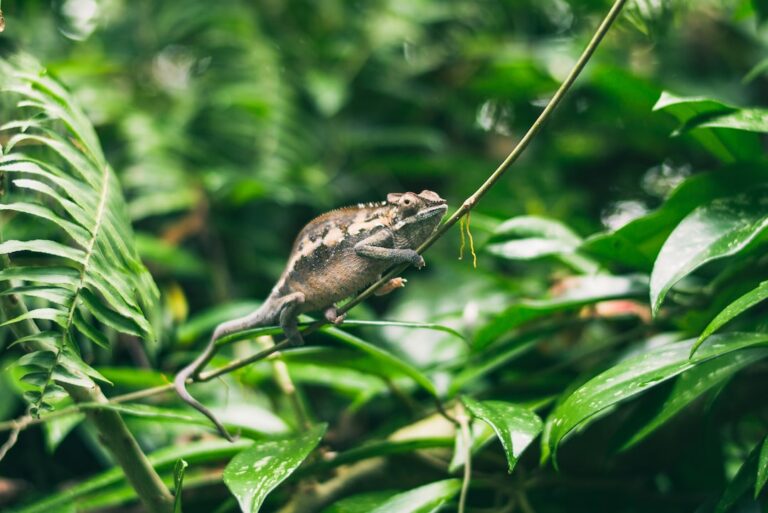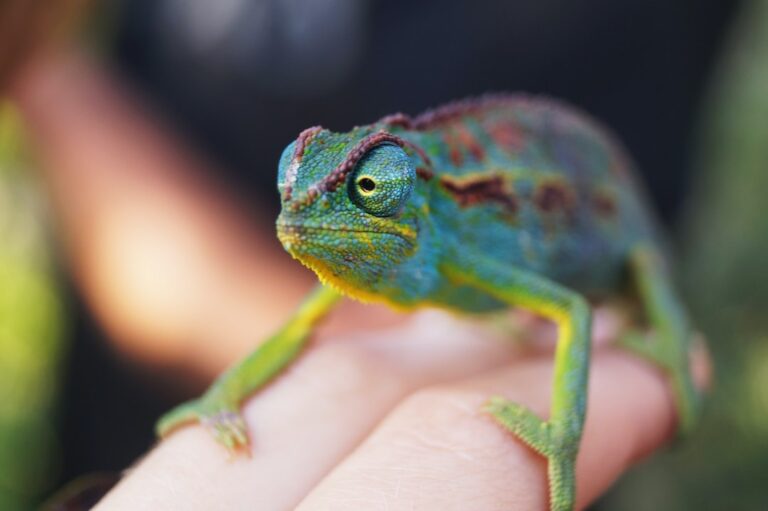Are Chameleons Mean?
Chameleons are fascinating creatures known for their ability to change color and blend into their surroundings. They are native to the tropical regions of Africa, Madagascar, and parts of Asia. Chameleons are unique in their behavior and have captivated the interest of many animal enthusiasts. In this article, we will explore the behavior of chameleons, including their natural habitat, aggression, and the myth of mean chameleons. We will also discuss factors that affect chameleon temperament, the possibility of taming them, and how to handle them safely.
Table of Contents
Understanding Chameleon Behavior
Chameleons are solitary creatures that spend most of their time in trees. They have a unique ability to change color, which helps them camouflage and communicate with other chameleons. Chameleons are known for their slow movements and their ability to rotate their eyes independently, allowing them to have a 360-degree view of their surroundings.
In their natural habitat, chameleons exhibit specific behavior patterns. They are primarily arboreal, meaning they live in trees and bushes. They have specialized feet that allow them to grip onto branches and climb with ease. Chameleons are also known for their hunting skills. They use their long tongues to catch insects, which make up the majority of their diet.
Do Chameleons Display Aggressive Behavior?
Chameleons can display aggressive behavior, but it is not as common as some may think. Aggression in chameleons is usually triggered by specific factors such as territorial disputes or feeling threatened. When a chameleon feels threatened, it may hiss, puff up its body, or display its vibrant colors as a warning sign.
It is important to note that aggression in chameleons is not directed towards humans unless they feel provoked or threatened. Chameleons are generally shy creatures and prefer to avoid confrontation. However, it is essential to understand their behavior and respect their boundaries to prevent any potential aggression.
The Myth of Mean Chameleons
There is a common misconception that chameleons are mean or aggressive creatures. This myth may stem from their unique appearance and the belief that their ability to change color is a sign of aggression. However, this is far from the truth.
Chameleons are not naturally mean or aggressive animals. They are simply trying to communicate or defend themselves when they display aggressive behavior. It is crucial to understand the reasons behind their behavior and provide them with a suitable environment to thrive.
Factors That Affect Chameleon Temperament
Several factors can affect a chameleon’s temperament. One of the most significant factors is the environment in which they are kept. Chameleons require specific conditions to thrive, including proper temperature, humidity, and lighting. If these conditions are not met, it can lead to stress and potentially aggressive behavior.
Another factor that can affect chameleon temperament is improper handling. Chameleons are delicate creatures and should be handled with care. Rough handling or excessive stress can cause them to become defensive or aggressive.
Proper nutrition is also essential for maintaining a chameleon’s overall health and temperament. A balanced diet consisting of gut-loaded insects, fruits, and vegetables is crucial for their well-being.
Can Chameleons Be Tamed?
While chameleons are not typically considered pets that can be easily tamed like dogs or cats, it is possible to establish a bond with them through patience and consistency. Chameleons are intelligent creatures and can recognize their owners over time.
Taming a chameleon requires a gentle approach and allowing them to become comfortable in their environment. Spending time near their enclosure, talking softly, and offering treats can help build trust. It is important to note that taming a chameleon takes time and may not be possible with every individual.
Chameleon Aggression Towards Other Animals
Chameleons can display aggression towards other animals, especially if they feel threatened or their territory is invaded. It is important to be cautious when introducing chameleons to other pets, such as dogs or cats. Proper supervision and gradual introductions are necessary to ensure the safety of all animals involved.
It is also important to note that chameleons are solitary creatures and prefer to live alone. Keeping multiple chameleons in the same enclosure can lead to territorial disputes and aggression.
How to Handle a Chameleon Safely
Handling a chameleon requires proper technique and caution. It is essential to approach them slowly and gently, allowing them to become comfortable with your presence. Supporting their body and avoiding any sudden movements is crucial to prevent stress or injury.
It is also important to wash your hands before handling a chameleon to remove any scents that may cause them to feel threatened. Chameleons have a keen sense of smell, and unfamiliar scents can trigger defensive behavior.
Signs of Stress and Aggression in Chameleons
It is important to monitor a chameleon’s behavior for signs of stress or aggression. Common signs include hissing, puffing up their body, displaying vibrant colors, or biting. If a chameleon displays these behaviors, it is essential to assess the situation and make any necessary adjustments to their environment or handling techniques.
Tips for Keeping a Happy and Healthy Chameleon
To ensure the well-being of a chameleon, it is important to provide them with a healthy and stimulating environment. This includes providing proper lighting, temperature, humidity, and a spacious enclosure with plenty of climbing branches and foliage.
A balanced diet consisting of gut-loaded insects, fruits, and vegetables is crucial for their nutrition. It is also important to provide them with clean water and ensure they are properly hydrated.
Seeking Professional Help for Aggressive Chameleons
If a chameleon displays persistent aggression or signs of stress, it may be necessary to seek professional help. Consulting with a veterinarian or animal behaviorist who specializes in reptiles can provide valuable insights and guidance on how to address the issue.
Understanding chameleon behavior is crucial for their proper care and handling. While chameleons can display aggressive behavior, it is important to debunk the myth of mean chameleons and understand the reasons behind their behavior. Factors such as environment, handling techniques, and nutrition can significantly impact a chameleon’s temperament. By providing a suitable environment and practicing patience and consistency, it is possible to establish a bond with these fascinating creatures.
If you’re interested in learning more about the fascinating world of reptiles, you might want to check out this article on why do chameleons chins puff up. It delves into the unique behavior of chameleons and explores the reasons behind this intriguing phenomenon. Discover the secrets behind their color-changing abilities and how they use their puffed-up chins as a form of communication. This article is a must-read for anyone curious about these captivating creatures.







